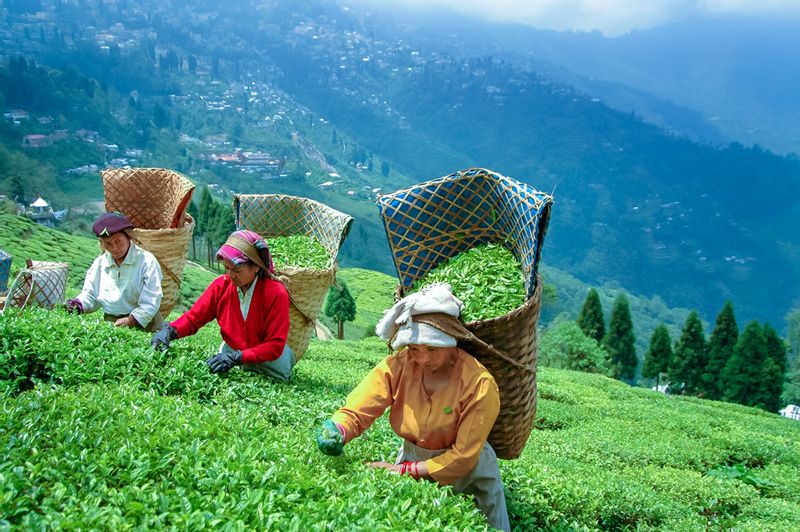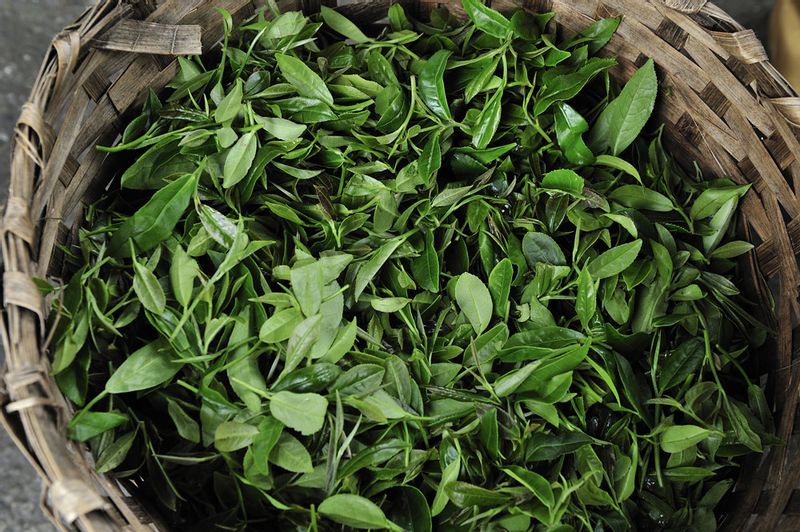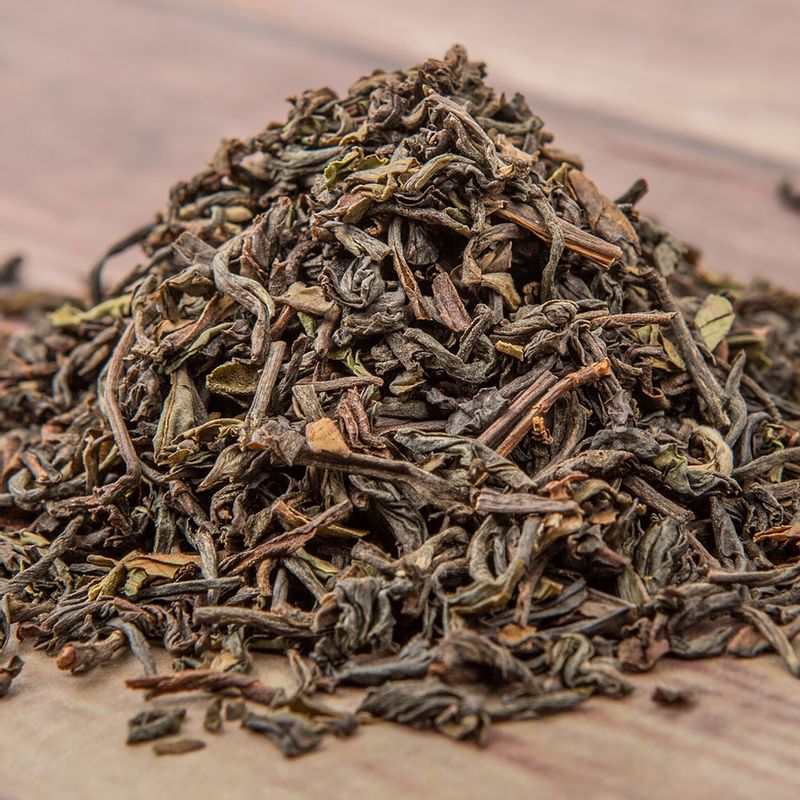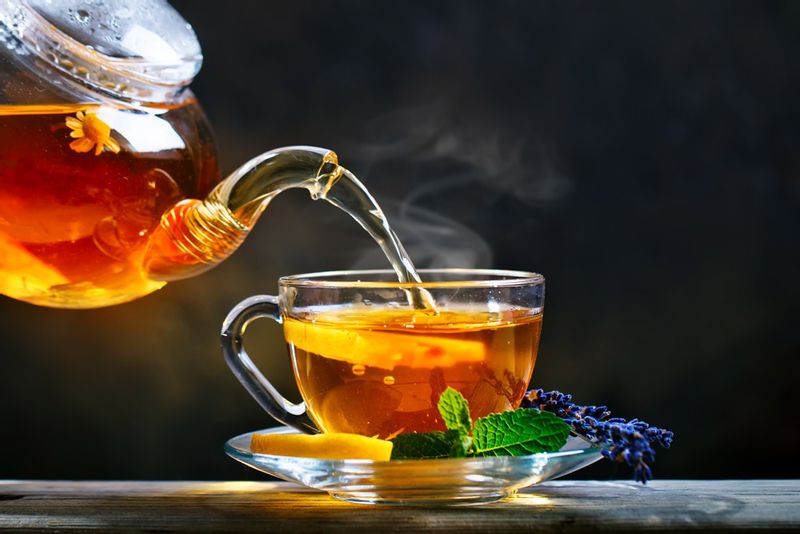A regular day starts for me with a large mug of Thurbo Second Flush. As I move through the day, Glenburn First Flush makes for a soothing companion. Post lunch, when I need to keep myself from dozing off, I return to Thurbo. And when friends come over, Gopaldhara First Flush is always my go-to. Call me an addict but my husband ignited the love for tea and now he’s created a monster.
If these names come across as Greek, they are all variations of Darjeeling Tea. Yes, surprised as you may be, Darjeeling Tea is not the mass-produced branded tea bag that you find on the menu of millions of restaurants and cafés. It is, in reality, an umbrella of a variety of tea produced by various plantations in the hills of West Bengal, across the year with immense patience and meticulous attention to detail.
Not every tea is Darjeeling Tea

When the British found it too cumbersome to remember all the types of gravy preparations across India, they came up with the term ‘curry’. Over the years, we did the same to our very own Darjeeling Tea. However, the reality is a little more complicated.
In order to avoid fake branding and mixed products, 87 tea estates spread across the Darjeeling district have been recognised by the Tea Board of India. The tea produced only on these estates have the authority to use the word ‘Darjeeling’ and logo on their products under the Geographical Indications Act and the Trade Marks Act; the first to be registered in India.
No teabags in Darjeeling

Rule of thumb, steer clear of aisles of tea bags and tea dust when you want Darjeeling tea. Darjeeling only produces orthodox tea which is tea leaves.
In order to provide the best quality possible, tea estates in Darjeeling continue to use the orthodox method of processing tea. Leaves are hand-picked, hand-processed, graded and packed, all in a span of 24 hours. Once tea leaves are ready to be plucked (not picked), pluckers get to work.
Only the first two leaves and a terminal bud are considered to be the most suitable for processing the highest quality of Darjeeling tea. Nearly ten thousand of these ‘fine-plucks’ produce a single pound of tea. All the plucked leaves are weighed and recorded and sent to the on-site factory. In these factories begin the precise steps of withering, rolling, fermenting and drying after which the finished product is sorted, graded and packed.
Despite being time-consuming, and with limited yield, Darjeeling tea continues to be a favourite with tea connoisseurs who maintain that it is the human touch that brings out the true colours and flavours. According to reports, Darjeeling produced only 8 million kgs in 2018 as compared to Assam that produced nearly 645 million kgs in 2018. But it is due to its premium nature that certain varieties of Darjeeling Tea are sold for as high as Rs 8,000 for a kilo, and have been auctioned for as much as Rs 54,000 a kilo.
Choose your Darjeeling Tea

Choosing a tea is like choosing wine. Flavour, aroma, taste and colour are the defining parameters for any tea. The more you drink, the more you learn. But these are some easy steps to choose the perfect Darjeeling tea variety for yourself:
Is it authentic?
Look for the Darjeeling Tea Board logo. If that is missing then you may be holding a fake. It may look like Darjeeling tea leaves, but it will only prove to be low-quality produce. And they don’t come mixed with flavours. Your favourite cranberry jasmine black tea is nothing more than a result of popular demand.
What are you looking for?
There is a variety to choose from. Darjeeling Tea comes in black, green, oolong, yellow, purple and white. They may all be produced on the same plantation. What differentiates them is the time spent on the fermentation stage. The faster they stop the fermentation process, the lighter the colour and body of the tea.
Choose your ‘flush’
Tea is produced across four seasons: First Flush (late-February to mid-April), Second Flush (May to June), Monsoon Flush (July to September), and Autumn Flush (October to November).
First Flush is considered the most delicate of all. If you like your tea to be soothing and full of flavour then look no further than the First Flush. But if you like a little bit of body and strong flavours, then head to the Second Flush.
Not the experimental type? Or maybe looking for healthy options? Choose the Monsoon Flush. The best green tea is produced in this season. But if you are ready to experiment and treat your senses then Autumn Flush is the thing. Considered the most complex and sophisticated produce, Autumn Flush is favoured by tea connoisseurs.
Don’t cook your tea; brew it

Darjeeling Tea is best experienced on its own, brewed for 3-5 minutes in warm water, depending on the colour and flavour that you desire. Here are simple steps of brewing a pot of Darjeeling tea:
- Simply take a teaspoon worth of tea leaves in a pot.
- Slowly pour boiling water over the leaves.
- Cover the pot and leave it for the desired time.
- Once brewed, strain the tea leaves and enjoy the tea with your favourite cookies.
If you are used to taking your tea with milk and sugar, it may take a little time to get used to the change. Start with a light flavour and gradually move on to the stronger brews. If you at all feel the need for sugar, do not add it directly to the tea, take it in your cup. Pair your cup with a cake or even chocolate to balance the flavours.
Where to get started
Find a tea café nearby and request for tea tasting. A good café will know the differentiating factors of its stock like the back of its hand. If they fumble, it isn’t the place for tea
The staff will help you make your choice. They will guide you through the tasting process, make you experience the heady aroma of brewed tea leaves, and show you the different colours that your tea leaves can take on.
Looking back at the history of tea in India, it feels ironic that the British once dismissed Darjeeling as a tea-growing land in favour of its neighbour Assam, when they first brought tea to India from China. But anyone who values good tea, swears by Darjeeling Tea. So, the next time you find it on a menu as a stand-alone item, order it!


